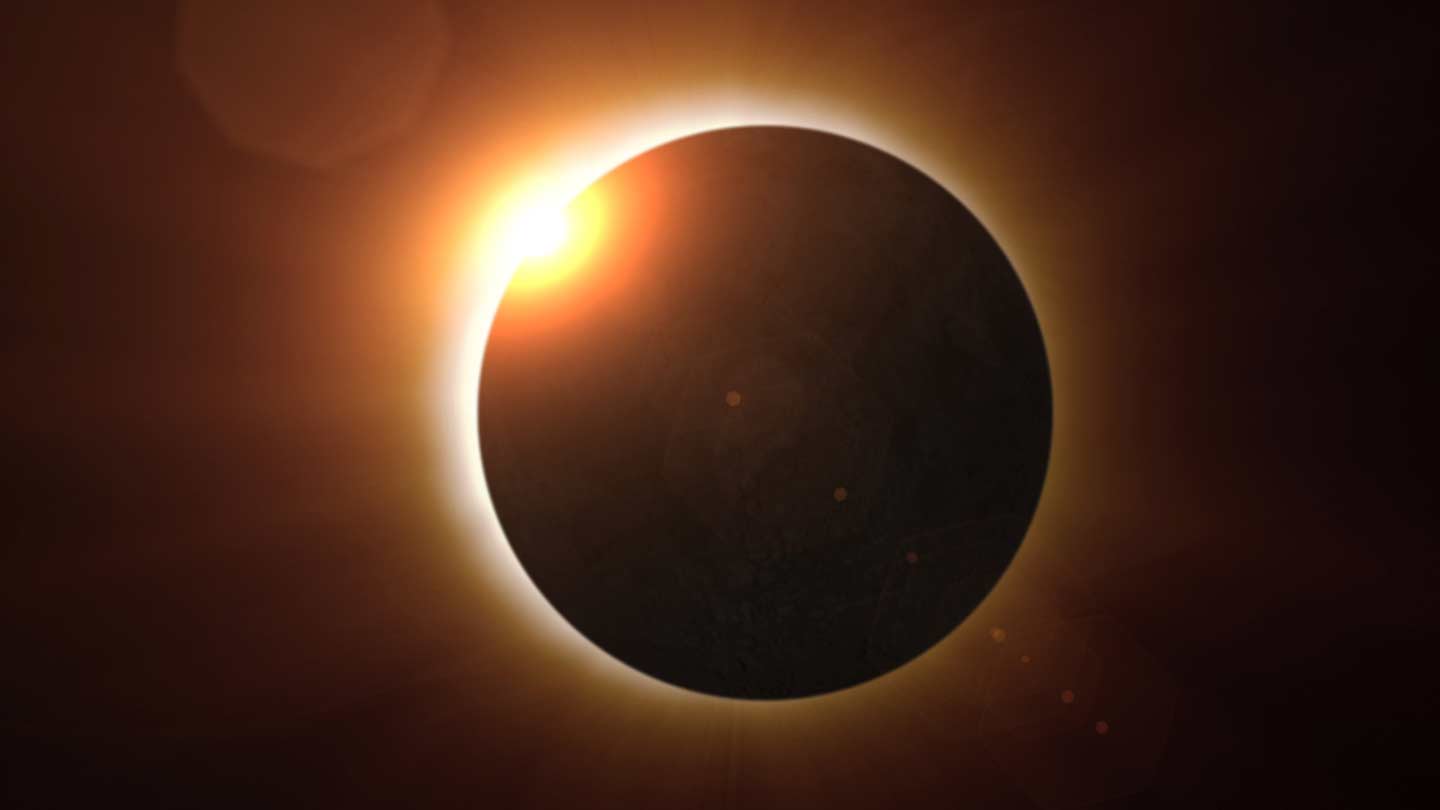
The Alabama Space Grant Consortium (ASGC) at The University of Alabama Huntsville, a part of the University of Alabama System, purchased and distributed 50,000 safe-viewing eclipse glasses for schools in the most economically disadvantaged communities in the state of Alabama to view the upcoming eclipse on Monday, April 8. This will be the last opportunity to see a solar eclipse from the contiguous United States for 20 years, and Alabamians will see up to 81% coverage.
The protective eyewear will enable thousands of observers to watch the upcoming partial eclipse across the region as part of an outreach plan to spark interest in science and STEM fields in an effort to help boost achievement scores in these areas. The Alabama Math, Science and Technology Initiative (AMSTI) assisted with the distribution as well. Donors helping to fund the initiative include Aerojet Rocketdyne, TVA and National Space Club-Huntsville.

Alabama Space Grant Consortium team at UAH displays solar glasses ready to be shipped.
“The program was modeled after a similar effort in West Virginia during the last eclipse,” says ASGC Program Manager Brooke Graham. “Our K-12 consultant, Dr. Kathryn Williamson, brought the idea to us last year. The ASGC Director, Dr. Dale Thomas, reached out to several Industrial Advisory Board members and other contacts across Research Park to help fundraise the money. To keep the distribution costs low, we teamed up with AMSTI-ALSDE to help reach the schools in need. Shane Haws played a big role in sending them to the appropriate AMSTI districts.”
The outreach effort was also supported by ASGC Associate Director Debora Nielson, ASGC Outreach Coordinator Melissa Simmons and AMSTI 6-8 Science Specialist Shane Haws. The project funded distributions to 11 AMSTI districts throughout the state and included training events for AMSTI Specialists, as well as the opportunity for teachers to earn PowerSchool credit, a provider of cloud-based software for K-12 education.
“We used the Alabama STEM Council’s Math and Science Achievement Proficiency database to identify school districts with greater than 50 percent of students who are economically disadvantaged and less than 50 percent of students achieving science proficiency,” Graham explains. “We combined these recommendations to make a list of 167 schools to target.”
The Alabama Space Grant Consortium is funded by NASA to increase the level of appreciation and leadership by the people of Alabama in national space exploration and aerospace engineering enterprises. ASGC is an association of universities and community colleges, educational and outreach groups, as well as industrial and government entities, that support undergraduate and graduate student scholarships and fellowships, empowering students to be outreach ambassadors to K-12 schools.
For more information on eclipse resources, visit Al Eclipse Resources.
Details
FILED IN
News Admissions News Science News Physics News Graduate Studies News News for Current Students News for Faculty/Staff News for Parents News for Research Partners Undergraduate Research News ASGC NewsContact
Kristina Hendrix
256-824-6341
kristina.hendrix@uah.edu

